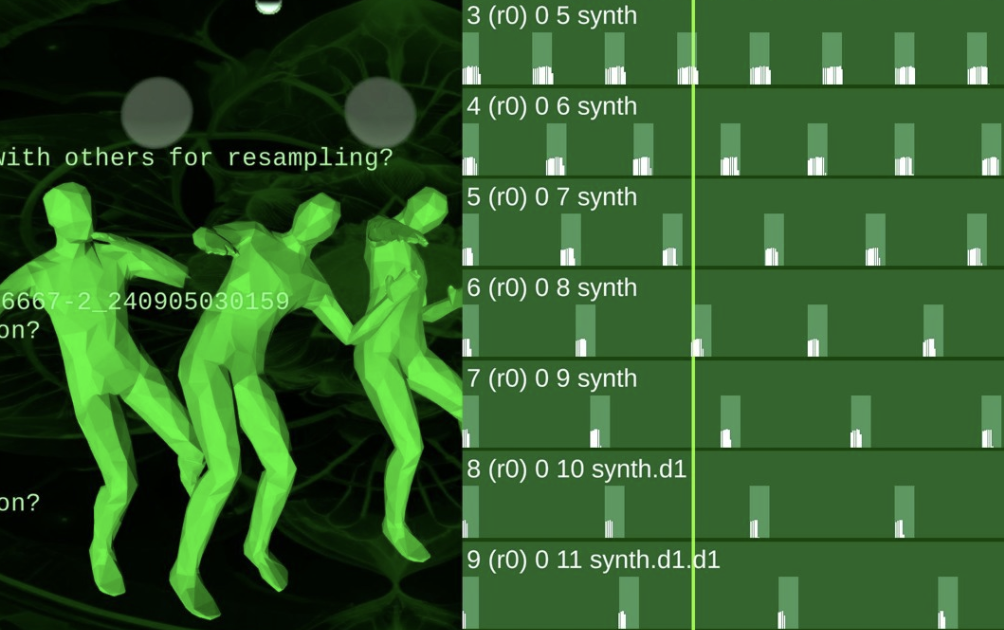- Published on
Breakbeat Polyrhythms: When 4/4 Isn't Enough
- Authors

- Name
- Joshua Jones
Breakbeat Polyrhythms: When 4/4 Isn't Enough
 Breaking free from the four-on-the-floor grid
Breaking free from the four-on-the-floor gridDance music has always been built on the steady pulse of four-on-the-floor. That unwavering kick has powered clubs for decades, anchoring the ecstatic push-and-pull of basslines, synths, and hi-hats. But within that reliable 4/4 frame, there's always been a restless desire to bend, twist, and stretch rhythm into stranger shapes. Enter the world of breakbeat polyrhythms: grooves that step outside the grid without losing their connection to the dancefloor.
The Mathematics of Movement
At its simplest, a polyrhythm is two (or more) rhythmic patterns happening at the same time that don't neatly line up. The classic example is a three-against-four rhythm, where one element cycles every three beats while another cycles every four. In jazz, African drumming, and even metal, these patterns create tension that propels the music forward. In electronic music, they become a way to escape predictability while still keeping bodies moving.
The trick for producers is making these polyrhythms feel musical rather than chaotic. A kick drum might stay locked to the four, acting as the spine of the track, while hi-hats or percussion drift into odd groupings: fives, sevens, or something more exotic. The groove emerges from how these layers interlock. If the ear always has one steady point of reference, the brain can enjoy the syncopation without feeling lost. That's why even wildly complex breakbeat programming often still feels "right" in the club, it plays with perception while never fully abandoning the dancers.
Production Techniques for Grid-Breaking Grooves
Producers working in DAWs can explore this by nudging loops into unconventional lengths. For example, dropping a seven-step percussion pattern over a 16-step grid means the hits will phase against the kick, creating constantly shifting accents. Or, you might take a sampled break and re-chop it into groups of five, so every bar feels like it's tumbling forward, just slightly ahead or behind the kick. These little distortions of the grid add movement and unpredictability, the kind that keeps DJs and listeners leaning in.
DJs, of course, face the practical question: how do you actually mix tracks that are playing with these odd cycles? That's where tools like Soniare's Beat DJ become powerful. While traditional decks lock to BPM and bar markers, Soniare allows much more flexible mixing in multiple ways. Mixing time signatures (video) is commonplace inside Beat DJ. Imagine layering a track built around a five-beat loop over a standard house cut, in most systems, the clash would sound messy. With Soniare's Beat DJ, these loops coexist with the same pulse and tuning, turning the booth into a playground of asymmetric rhythm.
The Dancefloor Response
The beauty is that dancers don't necessarily perceive these layers as "polyrhythms" in a technical sense. To the crowd, it just feels like tension and release, like a groove that's teasing the ear before locking back into a familiar pulse. A DJ might ride that tension for minutes, letting the crowd sway in an uneven lilt, before dropping back into the comfort of four-on-the-floor. That contrast, from strange to steady, can electrify a room.
Real-world examples of this approach are scattered across breakbeat, UK bass, and experimental techno. Producers like Autechre, DJ Rashad, or early jungle pioneers all played with lopsided loops that felt like they were spilling out of the bar line, even as the kick or bass anchored the listener. More recently, you hear it in the playful off-kilter percussion of artists like Batu or Pangaea, where grooves never quite settle but always maintain their energy. The club becomes a space not just for dancing, but for recalibrating your sense of time itself.
Accessibility Through Technology
For today's producers, experimenting with these ideas doesn't have to mean abandoning accessibility. Start with a simple 4/4 kick, then let one or two layers explore other rhythmic cycles. The ear will do the rest, finding patterns where none were "meant" to exist. And for DJs, having software that can adaptively lock these experiments into place means you're no longer limited to straight bars and clean grids. You can bring the raw thrill of rhythmic dissonance directly into the set.
The Emotional Impact of Asymmetry
Sometimes 4/4 feels like a straightjacket. It gives predictability, yes, and that steady pulse is what gets people on the dancefloor. But predictability can become inert, especially in genres that thrive on tension, surprise, or emotional irregularity. When rhythms fold into odd meters or shifts, listeners pay more attention: that moment when everything is slightly off-grid, when timing shifts just enough, it jolts the ear awake. It can add an emotional "tilt," a human irregularity that's hard to fake but feels deeply alive.
Take BT's reflections in Wired when he described a moment in a show where the rhythm moved from 4/4 into 6/8: "I thought, 'OK, here's the moment where a wormhole eats the room … but people understood intuitively how to move their bodies to it!" That sense that the crowd can follow something more complex than a straight four-on-the-floor shows how powerful a less conventional meter can be in dance music.
Jon Hopkins has remarked that electronic music setups often involve "systems to bring in accidents, to bring in quirks you didn't choose, but you still will have had to set up systems." That idea of embracing imperfection—of letting rhythmic surprises, odd divisions, or offbeat overlaps enter the mix—helps explain why many producers feel limited by strict 4/4: they want the freedom to twist the groove.
Also, Jam City's work on Classical Curves draws directly from rhythms not typically used in mainstream club music: staccato-based, syncopated hits, unexpected off-counts that feel borrowed from Jersey club or experimental UK bass. In that record, the tension between expectation (of standard meter) and rhythmic crunch is what gives those tracks energy and makes them memorable.
At its heart, this is what electronic music has always done best: push against the boundaries of the familiar while keeping the dancefloor moving. Breakbeat polyrhythms are just another way of saying, "what if rhythm could be stranger, slippier, more alive?" When four-on-the-floor isn't enough, that's where the fun begins.
